News
Interview With Author/ Cenobite Barbie Wilde – ‘Voices of the Damned’

Voices of the Damned artwork by Clive Barker (“She Waits”)
This past June, iHorror went on a horrific adventure with Author Barbie Wilde as she pulled us into the world of Michael Friday, an art historian that turned serial killer in her novel, The Venus Complex. Now Wilde is back with a collection of eleven short stories, Voices of the Damned. Three of the stories included in the book (Sister Cilice, The Cilciul Pandoric, & The Cilicium Rebellion) make up the Cilicium Trilogy, which is part of the Hellraiser Cenobitical Universe. Very appropriately the book was completed with an afterword from The Twisted Twins themselves, The Soska Sisters!

“Botophobia” Illustration by Tara Bush
Out of the 11 short stories, I found it tough to choose one to focus on or to call “my favorite.” All were superb! Of course, I really did enjoy The Cilicium Trilogy; any Hellraiser fan would! Putting all of that aside; I was very partial to the short Botophobia. The story focuses on Lorraine who is very much down on her luck, and she has little to no choice to return to her childhood home to deal with the realities of what her life has now become. Immediately I felt terrible for this character, and Barbie’s descriptive words put me in her place, and I felt like I had been to the house before. I had no idea what to expect with this story, and I was very eager, latching on to every word. This story had a twist that I did not see coming.

“Zulu Zombies” illustration by Nick Percival
Delivering gore, erotica and crazy dark themes that prick your psyche, Voices of the Damned will evoke many emotions, some you will experience for the first time. This is not your typical anthology, it is outright crazy and will make your stomach churn, but you’ll love every second of it.
Synopsis:
“Damaged people, ultraviolence, murder and explicit sex—what’s not to love about her work?”
—“Bad Barbie” Featurette, Fangoria (America’s #1 Horror Magazine)Enter into the mind of Barbie Wilde, whose disturbing interior world teems with the voices of rebellious female demons, devilish witches, semen-hungry neo-vampires, raging gods and home invaders, the fiends of sleep paralysis, pint-sized store-front preachers with a whiff of sulfur, body horrors of the most grotesque kind, clandestine aliens and Zulu zombies.
These truly are the Voices of the Damned: eleven short horror stories from Barbie Wilde, actress (Hellbound: Hellraiser II, Death Wish 3) and dark crime-horror novelist (The Venus Complex). Fangoria has called Wilde “one of the finest purveyors of erotically charged horror fiction around.”
Each story is accompanied by seductive, haunting, full color artworks and illustrations created by some of the most imaginative artists in the genre: Clive Barker, Nick Percival, Steve McGinnis, Daniele Serra, Eric Gross, Tara Bush, Vincent Sammy, & Ben Baldwin.
Praise for Voices of the Damned:
“Violence, pitch-black humor and yes, sex can be found in equal measure in her work, drawing complimentary comparisons to Clive Barker’s early works in his seminal Books of Blood collections.”
—Ron McKenzie, writer: Thoughts & Scribbles, Rue Morgue and artist: ronniemick at deviantart“this collection of eleven short stories confirms Wilde as a foremost author of erotic horror fiction…”
—Jon Towlson, Starburst magazine and author of Subversive Horror Cinema: Countercultural Messages of Films from Frankenstein to the Present“…her work is so uncanny and fearless, it is a must have for any horror aficionado.”
—filmmakers The Soska Sisters“Wilde is never one to shy away from verbose analysis of carnal pleasure, and in Voices of the Damned she certainly sets the bar high with regards to steamy, gory terror.”
—Colin McCracken, Zombie Hamster“Raised from the dead, this phantasmagoria of tales offers well-written mini-nightmares that will traumatize, titillate, and stick in your mind long after you’ve closed the book.”
—Filmmaker Izzy Lee, Fangoria Online“Reading Barbie Wilde has given me pervature of the spine. My eyes weep jizz, and I can’t take a wizz without melting someone’s face off. Now THAT’S entertainment!”
—John Skipp, New York Times best-selling author“When I read ‘The Venus Complex’ by Barbie Wilde, I was enthralled. It was magnificent in every way, and I knew then that the literary and horror fiction world in general, truly had someone special on their hands. So you can probably imagine my glee when I was offered the chance to review Barbie Wilde’s new work, the brilliant short story collection ‘Voices of the Damned’. The opening story is erotically charged and bristling with descriptions of violence, that those who’ve read Barbie’s previous work will have come to expect.”
—reelgingermoviefan.com

“Writer’s Block” Illustration by Daniele Serra
iHorror Interview With Author Barbie Wilde
Voices of the Damned –Interview
iHorror: How did Voices of the Damned come about? What were your inspirations?
Barbie Wilde: I’d been writing short horror stories since 2009. My first one, “Sister Cilice”, was featured in the Hellbound Hearts anthology (edited by Paul Kane and Marie O’Regan). All the stories in Hellbound Hearts were based on Clive’s novella, The Hellbound Heart, which was the basis for the mythology used in the subsequent Hellraiser films. To be honest, I nearly turned down the invitation, because I was more interested in writing crime novels than horror, but thanks to Paul’s encouragement, I stuck with it and wrote an “origin” story about a Female Cenobite.
Over the years, I contributed additional stories to different anthologies and I eventually accrued enough for a collection. However, I wanted to do something different and because I was in touch with a lot of artists in the genre, I thought that it would be cool to have each story accompanied by an artwork from a different artist in the field.
Then Paul Fry of SST Publications contacted me after reading my serial killer novel, The Venus Complex. He said that if I was planning to do a novel or collection in the future, to please think of his publishing company. (I’d reviewed a couple of Daniele Serra’s art books published by SST for Fangoria, etc.) I pitched the idea to him and Paul loved it. Since one of the things that SST specialized in was graphic novels and art books, I thought that it would be a good fit.
We decided to put together an illustrated collection of nine of my previously published short horror stories, plus two new ones. It would feature three stories about my Female Cenobite character, Sister Cilice, which we subsequently called “The Cilicium Trilogy”.
iH: I absolutely adore the illustrations used in Voices of the Damned, it brings everything together seamlessly, what were the steps in accomplishing this?
BW: Daniele Serra was on board immediately for “Valeska” and “Writer’s Block”. (Dani had created the cover artwork for my serial killer novel, The Venus Complex.) Then I contacted Mark Miller of Clive Barker’s Seraphim Films, because I loved the idea of having some of Clive’s artwork in the book. Clive contributed the cover artwork (“She Waits”), “Kiss Me” for the story “Sister Cilice” and “Princess Breath for “Gaia”.
Nick Percival was next on board for “Zulu Zombies” in his inimitable amazing style. Eric Gross had already created the fabulous illustration for “The Cilicium Pandoric” (Part II of “The Cilicium Trilogy”), which had been published in Fangoria’s Gorezone. Eric also did the illustration for the third story in the Trilogy, “The Cilicum Rebellion”.
Ben Baldwin (“The Alpdruck”), Tara Bush (“Botophobia”) and Vincent Sammy (“American Mutant”) came through Paul’s contacts. I viewed their work online and fell in love with what I saw. I met Steve McGinnis (“Polyp”) at Horror-Rama, a convention in Toronto that I attended in 2014. Steve did the amazing John Carpenter cover for Fangoria.
All the artists featured in Voices of the Damned have such brilliant individual styles and they’ve contributed a unique dimension to the book with their own artistic interpretations of my stories, making Voices of the Damned an extraordinary cocktail of art and carnal horror.
iH: Which story from Voices of the Damned did you enjoy creating the most?
BW: That’s such a difficult question to answer! I loved writing all of them. I suppose that “Sister Cilice” will always hold a special place in my heart, because it was my first horror story and I wrote it in a few days. (Something I’ve never been able to do since!) “Zulu Zombies” was an insane rollercoaster of gore and horror and tremendous fun to write, as was “Writer’s Block”. “Gaia” is also one of my favorites, because it was a story that tapped into one of my real life phobias about home invasion. Finally, “Botophobia” was a very personal story for me, as I was scared to death as a kid by watching the so-called “Creature Features” on TV and I do have a morbid fear of basements, which is what Botophobia is.
iH: Have you thought of expanding any of your stories into a novel?
BW: I believe that my “vampires with a difference tale”, “Valeska”, is ripe for development into a novel. As a matter of fact, it started out as one and I shaped it into a short story for the collection.
iH: Have you been approached to turn any of your works into a feature film?
BW: A filmmaker friend of mine loves “Gaia” and wants to turn it into a feature film. I’ve also just finished a new story that we’re hoping to turn into a short horror movie. And finally, I’m working on the screenplay for Zulu Zombies.
iH: Was there anything in particular that made you want to start writing specifically in the horror genre?
BW: It seemed a very natural progression when Paul Kane asked me to contribute a story to Hellbound Hearts. He suggested that I expand on a female cenobite character. The stories couldn’t be based on the Hellraiser films for legal reasons, so I took my inspiration from the fact that the Lead Cenobite in the novella was female, a character trait that was changed for the Hellraiser movie franchise.
I’m interested in writing about humans and their motivations. Horror is part and parcel of being human, as we seem to be such a blood-thirsty species, Colin Wilson documents so brilliantly in one of my favorite non-fiction books, A Criminal History of Mankind. Although I occasionally dip into the supernatural, to me, humans are the scariest monsters of them all.
iH: Do you have any advice for aspiring horror writers?
BW: Just keep writing, keep creating, keep expanding your mind and researching your topics. It took many years for me to find a publisher that finally understood me and my first novel, The Venus Complex, but eventually I did get published. One of my favorite sci-fi comedies is GalaxyQuest and I love the rallying cry from the film: “Never give up. Never surrender.”
iH: From The Venus Complex to Voices of the Damned, how was the transition from a full length novel to short stories?
BW: I love writing short stories, because it’s a wonderful discipline to have to get your message across in just a few thousand words. Novels are a big investment in time and brain power. Also, it was useful for me to have the short stories reviewed in the run-up to the publication of the novel. To use a music biz analogy, it’s like releasing singles to create a buzz before the album comes out.
iH: Do you have anything coming up in the near future? Films? Books? Appearances?
BW: I’m guesting at Days of the Dead in Louisville, Kentucky on the first weekend of September. Next year will be the 30th Anniversary of Hellraiser, so I hope to attend a few conventions to celebrate.

“American Mutant” Illustration by Vincent Sammy
Barbie’s Media Sites:
Official Website Facebook – Barbie Wilde Facebook – Barbie Wilde / Author / Actress Twitter

Created by Neal Jones of the Without Your Head Podcast (containing artwork by Clive Barker, Eric Gross and Daniele Serra)
'Civil War' Review: Is It Worth Watching?
Follow our new YouTube channel "Mysteries and Movies" here.

Lists
Thrills and Chills: Ranking ‘Radio Silence’ Films from Bloody Brilliant to Just Bloody
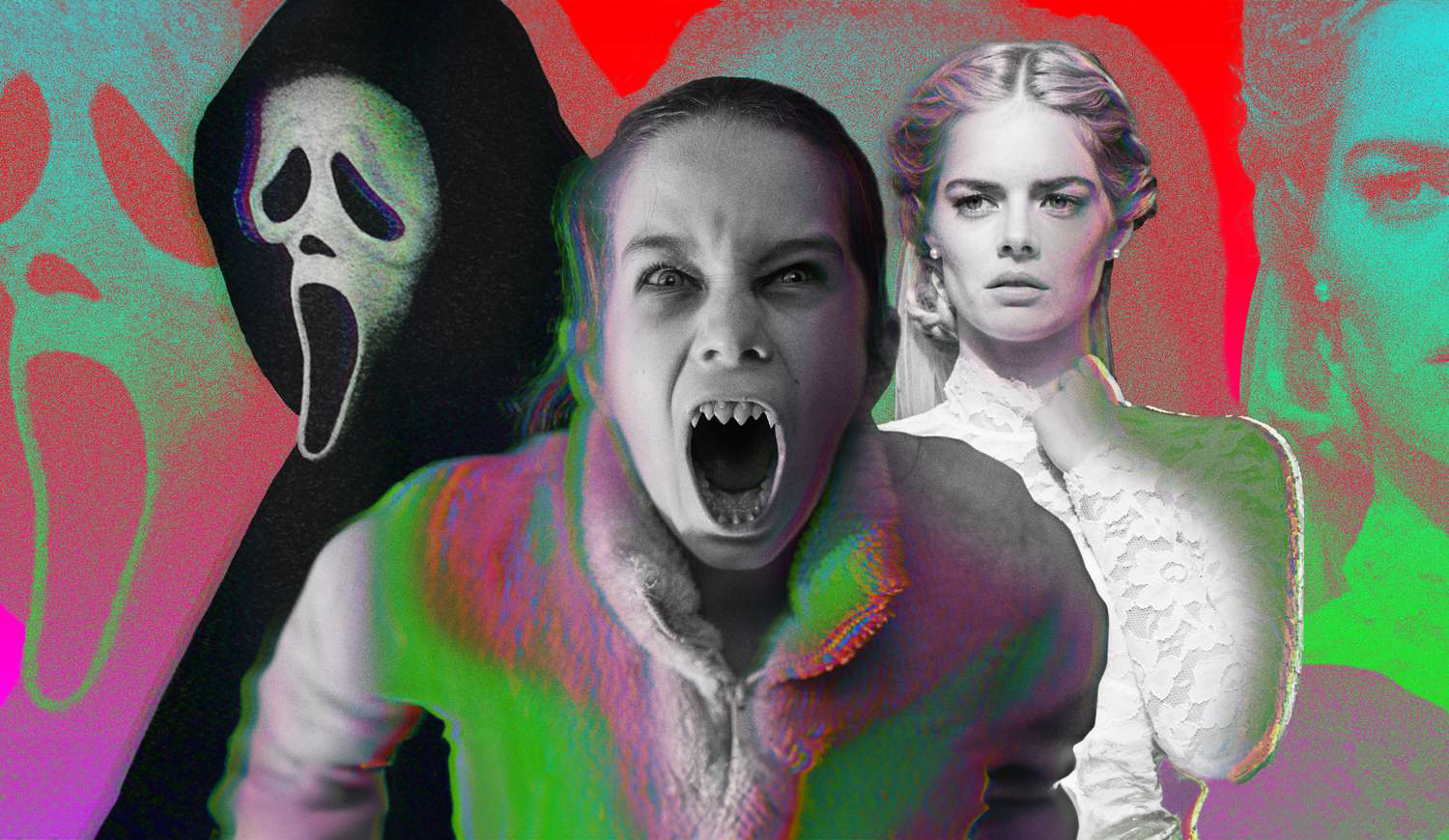
Matt Bettinelli-Olpin, Tyler Gillett, and Chad Villella are all filmmakers under the collective label called Radio Silence. Bettinelli-Olpin and Gillett are the primary directors under that moniker while Villella produces.
They have gained popularity over the past 13 years and their films have become known as having a certain Radio Silence “signature.” They are bloody, usually contain monsters, and have breakneck action sequences. Their recent film Abigail exemplifies that signature and is perhaps their best film yet. They are currently working on a reboot of John Carpenter’s Escape From New York.
We thought we would go through the list of projects they have directed and rank them from high to low. None of the movies and shorts on this list are bad, they all have their merits. These rankings from top to bottom are just ones we felt showcased their talents the best.
We didn’t include movies they produced but didn’t direct.
#1. Abigail
An update to the second film on this list, Abagail is the natural progression of Radio Silence’s love of lockdown horror. It follows in pretty much the same footsteps of Ready or Not, but manages to go one better — make it about vampires.
#2. Ready or Not
This film put Radio Silence on the map. While not as successful at the box office as some of their other films, Ready or Not proved that the team could step outside their limited anthology space and create a fun, thrilling, and bloody adventure-length film.
#3. Scream (2022)
While Scream will always be a polarizing franchise, this prequel, sequel, reboot — however you want to label it showed just how much Radio Silence knew the source material. It wasn’t lazy or cash-grabby, just a good time with legendary characters we love and new ones who grew on us.
#4 Southbound (The Way Out)
Radio Silence tosses their found footage modus operandi for this anthology film. Responsible for the bookend stories, they create a terrifying world in their segment titled The Way Out, which involves strange floating beings and some sort of time loop. It’s kind of the first time we see their work without a shaky cam. If we were to rank this entire film, it would remain at this position on the list.
#5. V/H/S (10/31/98)
The film that started it all for Radio Silence. Or should we say the segment that started it all. Even though this isn’t feature-length what they managed to do with the time they had was very good. Their chapter was titled 10/31/98, a found-footage short involving a group of friends who crash what they think is a staged exorcism only to learn not to assume things on Halloween night.
#6. Scream VI
Cranking up the action, moving to the big city and letting Ghostface use a shotgun, Scream VI turned the franchise on its head. Like their first one, this film played with canon and managed to win over a lot of fans in its direction, but alienated others for coloring too far outside the lines of Wes Craven’s beloved series. If any sequel was showing how the trope was going stale it was Scream VI, but it managed to squeeze some fresh blood out of this nearly three-decade mainstay.
#7. Devil’s Due
Fairly underrated, this, Radio Silence’s first feature-length film, is a sampler of things they took from V/H/S. It was filmed in an omnipresent found footage style, showcasing a form of possession, and features clueless men. Since this was their first bonafide major studio job it’s a wonderful touchstone to see how far they have come with their storytelling.
'Civil War' Review: Is It Worth Watching?
Follow our new YouTube channel "Mysteries and Movies" here.
News
Perhaps the Scariest, Most Disturbing Series of The Year

You may have never heard of Richard Gadd, but that will probably change after this month. His mini-series Baby Reindeer just hit Netflix and it’s a terrifying deep dive into abuse, addiction, and mental illness. What is even scarier is that it’s based on Gadd’s real-life hardships.
The crux of the story is about a man named Donny Dunn played by Gadd who wants to be a stand-up comedian, but it’s not working out so well thanks to stage fright stemming from his insecurity.
One day at his day job he meets a woman named Martha, played to unhinged perfection by Jessica Gunning, who is instantly charmed by Donny’s kindness and good looks. It doesn’t take long before she nicknames him “Baby Reindeer” and begins to relentlessly stalk him. But that is just the apex of Donny’s problems, he has his own incredibly disturbing issues.
This mini-series should come with a lot of triggers, so just be warned it is not for the faint of heart. The horrors here don’t come from blood and gore, but from physical and mental abuse that go beyond any physiological thriller you may have ever seen.
“It’s very emotionally true, obviously: I was severely stalked and severely abused,” Gadd said to People, explaining why he changed some aspects of the story. “But we wanted it to exist in the sphere of art, as well as protect the people it’s based on.”
The series has gained momentum thanks to positive word-of-mouth, and Gadd is getting used to the notoriety.
“It’s clearly struck a chord,” he told The Guardian. “I really did believe in it, but it’s taken off so quickly that I do feel a bit windswept.”
You can stream Baby Reindeer on Netflix right now.
If you or someone you know has been sexually assaulted, please contact the National Sexual Assault Hotline at 1-800-656-HOPE (4673) or go to rainn.org.
'Civil War' Review: Is It Worth Watching?
Follow our new YouTube channel "Mysteries and Movies" here.
Movies
The Original ‘Beetlejuice’ Sequel Had an Interesting Location
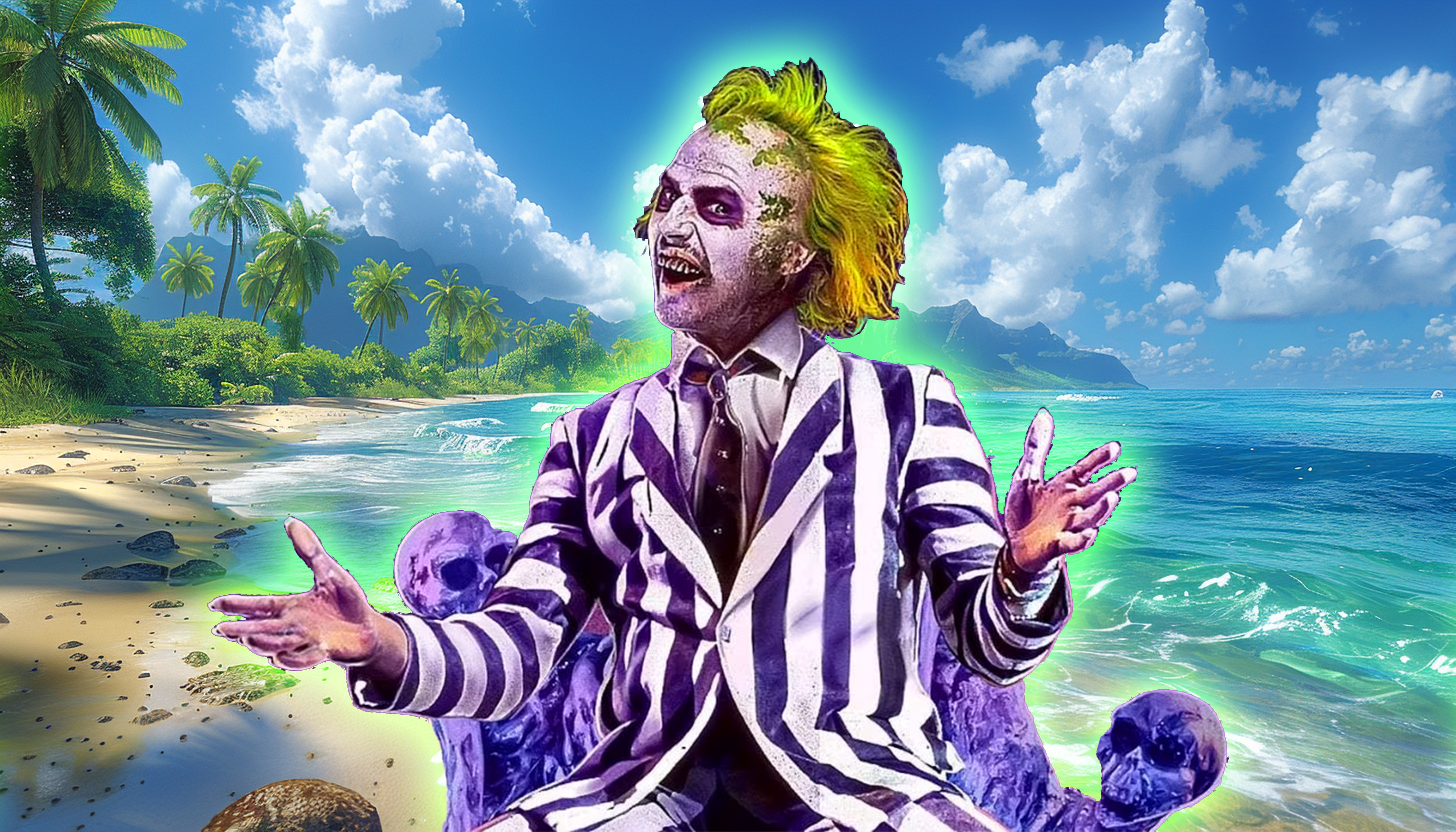
Back in the late ’80s and early ’90s sequels to hit movies weren’t as linear as they are today. It was more like “let’s re-do the situation but in a different location.” Remember Speed 2, or National Lampoon’s European Vacation? Even Aliens, as good as it is, follows a lot of the plot points of the original; people stuck on a ship, an android, a little girl in peril instead of a cat. So it makes sense that one of the most popular supernatural comedies of all time, Beetlejuice would follow the same pattern.
In 1991 Tim Burton was interested in doing a sequel to his 1988 original, it was called Beetlejuice Goes Hawaiian:
“The Deetz family moves to Hawaii to develop a resort. Construction begins, and it’s quickly discovered that the hotel will be sitting on top of an ancient burial ground. Beetlejuice comes in to save the day.”
Burton liked the script but wanted some re-writes so he asked then-hot screenwriter Daniel Waters who had just got done contributing to Heathers. He passed on the opportunity so producer David Geffen offered it to Troop Beverly Hills scribe Pamela Norris to no avail.
Eventually, Warner Bros. asked Kevin Smith to punch up Beetlejuice Goes Hawaiian, he scoffed at the idea, saying, “Didn’t we say all we needed to say in the first Beetlejuice? Must we go tropical?”
Nine years later the sequel was killed. The studio said Winona Ryder was now too old for the part and an entire re-cast needed to happen. But Burton never gave up, there were a lot of directions he wanted to take his characters, including a Disney crossover.
“We talked about lots of different things,” the director said in Entertainment Weekly. “That was early on when we were going, Beetlejuice and the Haunted Mansion, Beetlejuice Goes West, whatever. Lots of things came up.”
Fast-forward to 2011 when another script was pitched for a sequel. This time the writer of Burton’s Dark Shadows, Seth Grahame-Smith was hired and he wanted to make sure the story wasn’t a cash-grabbing remake or reboot. Four years later, in 2015, a script was approved with both Ryder and Keaton saying they would return to their respective roles. In 2017 that script was revamped and then eventually shelved in 2019.
During the time the sequel script was being tossed around in Hollywood, in 2016 an artist named Alex Murillo posted what looked like one-sheets for a Beetlejuice sequel. Although they were fabricated and had no affiliation with Warner Bros. people thought they were real.
Perhaps the virality of the artwork sparked interest in a Beetlejuice sequel once again, and finally, it was confirmed in 2022 Beetlejuice 2 had a green light from a script written by Wednesday writers Alfred Gough and Miles Millar. The star of that series Jenna Ortega signed on to the new movie with filming starting in 2023. It was also confirmed that Danny Elfman would return to do the score.
Burton and Keaton agreed that the new film titled Beetlejuice, Beetlejuice wouldn’t rely on CGI or other other forms of technology. They wanted the film to feel “handmade.” The film wrapped in November 2023.
It’s been over three decades to come up with a sequel to Beetlejuice. Hopefully, since they said aloha to Beetlejuice Goes Hawaiian there has been enough time and creativity to ensure Beetlejuice, Beetlejuice will not only honor the characters, but fans of the original.
Beetlejuice, Beetlejuice will open theatrically on September 6.
'Civil War' Review: Is It Worth Watching?
Follow our new YouTube channel "Mysteries and Movies" here.
-

 News6 days ago
News6 days agoWoman Brings Corpse Into Bank To Sign Loan Papers
-

 News7 days ago
News7 days agoHome Depot’s 12-Foot Skeleton Returns with a New Friend, Plus New Life-Size Prop from Spirit Halloween
-

 News5 days ago
News5 days agoBrad Dourif Says He’s Retiring Except For One Important Role
-

 Strange and Unusual5 days ago
Strange and Unusual5 days agoMan Arrested for Allegedly Taking a Severed Leg From Crash Site And Eating It
-

 Movies6 days ago
Movies6 days agoPart Concert, Part Horror Movie M. Night Shyamalan’s ‘Trap’ Trailer Released
-
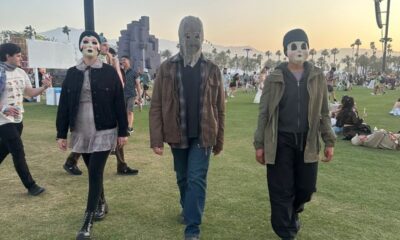
 Movies7 days ago
Movies7 days ago‘The Strangers’ Invaded Coachella in Instagramable PR Stunt
-

 Movies6 days ago
Movies6 days agoAnother Creepy Spider Movie Hits Shudder This Month
-
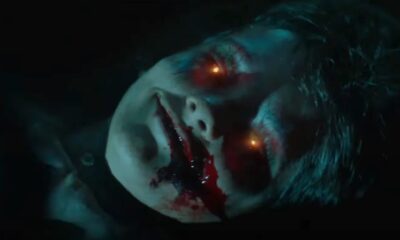
 Movies7 days ago
Movies7 days agoRenny Harlin’s Recent Horror Movie ‘Refuge’ Releasing in U.S. This Month
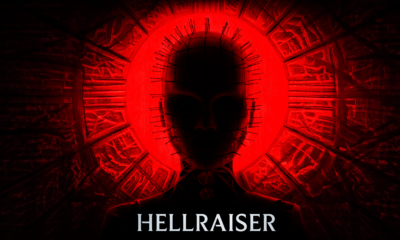

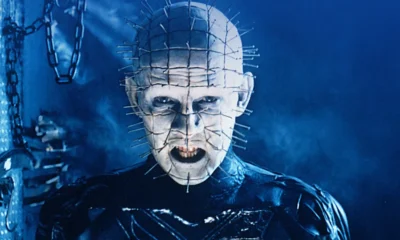





















You must be logged in to post a comment Login